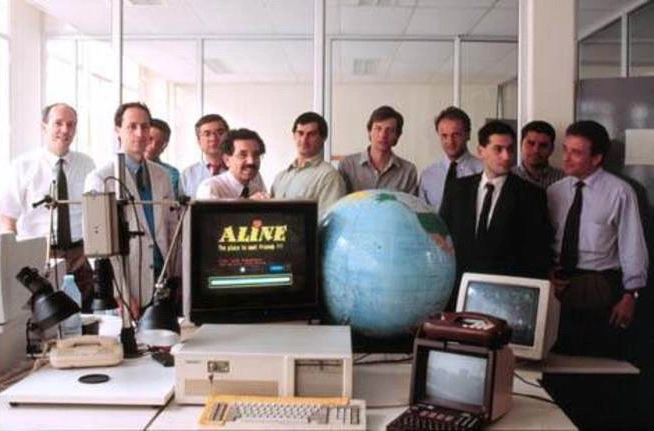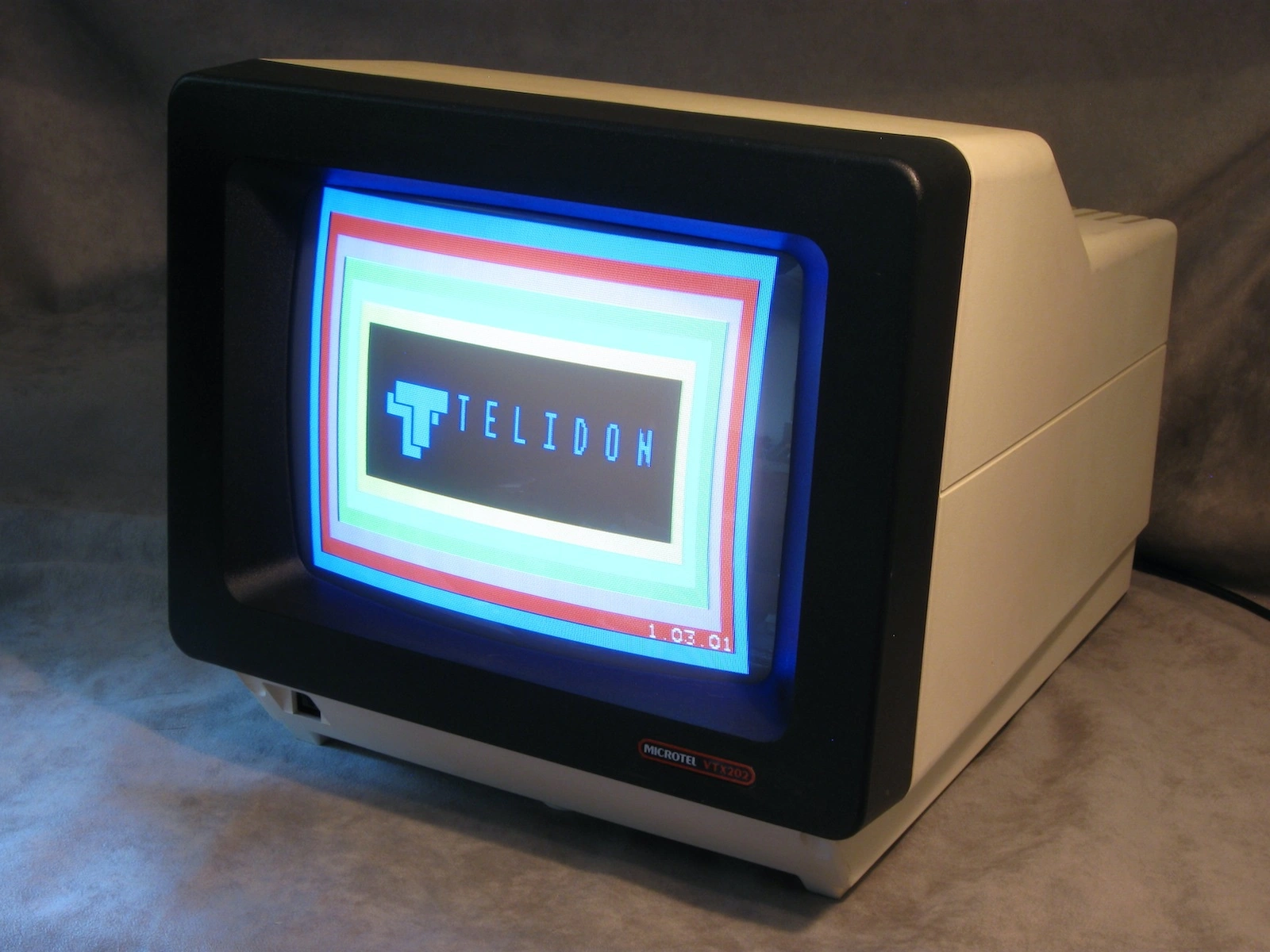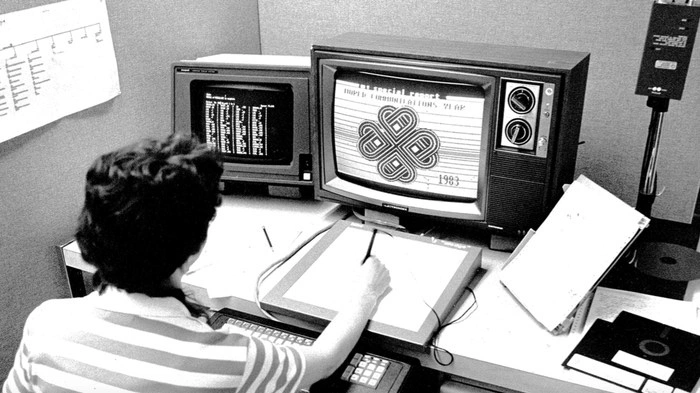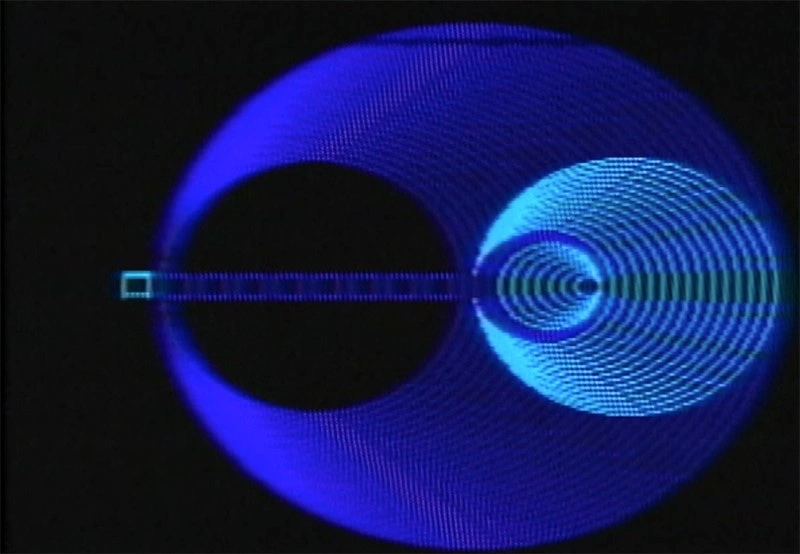Chapter 2
Steam Punk Internet: What Is Telidon?
"What we find changes who we become."
- Peter Morville
It seems that some good ideas take multiple tries to establish themselves. Before the web was widely adopted in the 1990s, there were many systems that predated it and were capable of very similar things. Usually, they were national efforts, sponsored by state and industry. France had firmly established its famous Minitel[1] by the early 1980s for information services, travel bookings, banking, chat communications, and entertainment.[2] In the late 1970s, universities in the United States ran similar services on the PLATO[3] network and computer platform. Germany and Austria adopted similar efforts with BTX (Bildschirmtext)[4] and Mupid.[5] Every large industrialized western economy seemingly had its own precursor to the web in the late 1970s and early 1980s.
Canadas Own Proto-Web
Starting in the late 1970s and well into the 1980s, the Canadian Ministry of Communications initiated the development of Canada's own proto-web: Telidon,[6] a phone line-connected system that acted as a two-way, interactive videotex/Teletext. Telidon was a computerized information network using some of the technology introduced by videotex/Teletext services around the world. But Telidon was far more capable; it was interactive. Users had their computer terminal attached to their television at home. They could not only query information like weather services, stock prices, and the horoscope, but they could actually make transactions. Users could book flights, send messages, transfer money, and make use of many other interactive services. The system used a data protocol that not only transmitted text characters, but also graphics.

Figure 2: Minitel at the groupe Perdiel, 1987. Source: https://blogs.mediapart.fr/michel-puech/blog/200610/le-monde-du-minitel-se-paye-le-monde(Retrieved on March 12, 2020)
As this was a Canadian invention, Telidon was multi-lingual nearly from the start. The graphics standard that the Canadian Communications Research Centre (CRC)[7] had developed produced visuals that were blocky by today's standards, but the system was more advanced than its contemporaries Videotex,[8] Ceefax,[9] and Presstel.[10]
In short, Telidon was Canada's realistic shot at inventing interactive network communication services well before their time.
Trials and Tribulations
The first public tests of the Telidon system started in 1980 in the small town of South Headingley near Winnipeg. The trial system was named "Project Ida to honor Ida Cates, the first woman phone operator from a century prior."[11] This broad experiment included not only Telidon, but also cable telephony, utilities billing systems, and even alarm services all running through the network infrastructure provided by the local cable operator Manitoba Telephone System (MTS).
The trial needed content. The Toronto-based company, Infomart, delivered Telidon content during the testing phase. They also set up servers and network connections to the in-home terminals. And they needed the actual content to transport through the elaborate connections. This is where Telidon's crafty graphical system proved to be of great advantage.

Figure 3: Microtel VTX-202, Telidon Terminal. Source: Brent Hilpert, Madrona Grove. http://madrona.ca/e/telidon/index.html (Retrieved on April 15, 2020)
Graphics Innovations of Telidon
The first version of the Telidon graphics system was called Telidon 699 and the second version was called Telidon 709 (the numbers were based on the technical documentation in the program with optional an "E" and an "F" denoting whether they are the English or French version).
The process by which the Telidon server delivers graphics to terminals is not very different from other systems. The image data is encoded in a series of instructions called Picture Description Instructions (PDI). These are transmitted to the display hardware, which in turn decodes them and displays the images.
The available bandwidth at the time was very restricted, so the transmitted images had to be as efficient as possible. Other systems solved this by breaking down the images into large picture elements (pixels), describing the exact coordinates and colors of each pixel, and sending this as instructions.
The PDI[12] of Telidon could also do this, but the big difference was that Telidon was also capable of utilizing vector graphics, something that other contemporary systems were not capable of. The instructions to draw a line as a vector graphic consisting of the coordinates of the start point of the line and the coordinates of the endpoint of the line, together with the instructions for the color of the line, make for a very efficient way of describing this part of a graphic. By comparison, a videotex terminal would send the coordinates of every single picture element that the line consists of, thus increasing the transfer times. The Telidon method needed proportionately less time for the data transfer.

Figure 4: A Norpak Page Creation Terminal. Photo Courtesy Of Nina Beveridge, Scan By Jordan Pearson. Source: The Original Net Artists. Motherboard. Tech by Vice. https://www.vice.com/en_us/article/ezveak/the-original-net-artists (retrieved on February 12, 2020)
To be fair, the trade-off for this efficiency was the burden put on the end user's terminal. The receiving device needed greater computational performance to draw the graphics based on the instructions meticulously. This had two interesting side effects.
First, drawing the graphics layer by layer, circle by circle, line by line, happened right in front of the end user. They saw how relatively slowly the image came to be. To this effect, it looked like an animation. Since the image did not pop onto the TV fully formed, it looked like there was movement while the image was built up on the display.
The second side effect was that vector graphics proved to be much more future proof. The same instructions used to draw a line, a box, or a circle on the low-resolution displays in 1980 would yield far better results on the higher resolution screens a decade later — without any change to the original instructions. The start point and the endpoint always remained the same, but the fidelity of the line drawn between them was dependent on the display hardware.
Telidon's PDI graphics system proved to be so advanced that it was further developed, and that latter version turned into the so-called NAPLPS standard, the North American Presentation Level Protocol Syntax, an advanced graphics description language.
But we are getting ahead of ourselves. With the Telidon graphics system in place, someone had to create the actual graphics.
Interactive Art in the Comfort of Your Home
Among the first batch of content provided on Telidon during its trial run, there were not only publications like The Bay and the Toronto Star or the venerable Encyclopedia Britannica, but also experimental art.
As Chris Hampton but it in his article for cbc.ca: "A community of arts-minded electronics wonks, telecom prophets and other curious sorts coalesced around it, embracing it as an art medium."[13]
This community might well be considered among the first internet artists. Among them were Bill Perry, Nell Tenhaaf, Douglas Porter, and Adele D'Arcy. They created their artwork using different machines — either the powerful and quite expensive creation terminals or by hacking together software on an Apple II and exporting their work so that it can be hosted on the Telidon network.
Examples of these pieces of art were individual images, online magazines like Bill Perry's Computerese, or interactive information sets or elaborate digital installations like Nell Tenhaaf's Us and/or Them. These works were created for the trial in the early 1980s and showed the capabilities of this early tech.
Audiences could explore Telidon art, be surprised and astonished at the capabilities, but also get a brief glimpse into what digital arts held in store for the world at a much later time in the future.

Figure 5: "3-D Series" by Anat Matri, 1983. Screenshot: Canadian Artists and TelidonSource: https://www.vice.com/en_us/article/ezveak/the-original-net-artists (Retrieved on April 15, 2020)
When the Telidon project and its trial came to an end, the artists continued creating electronic and digital artwork. Their works were thought to be lost.
Yet, in the mid-2010s, they would be rediscovered in a most peculiar way.
This is the story of the lost art of Telidon and how it landed on Instagram more than three decades after it had been created.
Footnotes
[1]
Oral History of Minitel and x.25 Networds. (in French)
https://www.minitel.org
(Retrieved on) April 15, 2020)
» Back [1]
[2]
On the Farms of France, the Death of a Pixelated
Workhorse.
https://www.nytimes.com/2012/06/28/world/europe/after-3-decades-in-france-minitels-days-are-numbered.html
(Retrieved on April 15, 2020)
» Back [2]
[3]
Dear, Brian.
The Friendly Orange Glow: The Untold Story of the PLATO
System and the Dawn of Cyberculture.
(2017). Pantheon Books, New York City ISBN-13: 978-1101871553
» Back [3]
[4]
German Federal Legislature for BTX,
Bildschirmtext-Staatsvertrag.
(in German)
https://bravors.brandenburg.de/vertraege/bildschirmtext_stv
(Retrieved on April 15, 2020)
» Back [4]
[5]
MUCH Museum of the Technical University Graz. (in
German)
https://much.isds.tugraz.at/much/projects/mupid_7/index.htm/
(Retrieved on April 13, 2020)
» Back [5]
[6]
Banks, Michael A.
On the way to the web: the secret history of the internet and
its founders.
(2008). Apress. ISBN 978-1-4302-0869-3
» Back [6]
[7]
Banks, Michael A. Nelms, LeRoy. Hindson, Bill.
A Brief History of CRC. Friends of CRC
http://www.friendsofcrc.ca/Nelms-BriefHistoryOfCRC/A%20Brief%20History%20of%20CRC.html
(Retrieved on April 13, 2020)
» Back [7]
[8]
International Telecommunication Union.
Terminal Equipment and Protocols for Telematic Services.
http://www.itu.int/rec/dologin_pub.asp?lang=e&id=T-REC-T.100-198811-I!!PDF-E&type=items
(Retrieved on April 16, 2020)
» Back [8]
[9]
BBX Video: CEEFAX: World's First Teletext Service, 23
September 1974.
https://www.bbc.co.uk/programmes/p01k3l1q
(Retrieved on April 16, 2020)
» Back [9]
[10]
Benton, Peter. Fanfare for Presstel.
http://iml.jou.ufl.edu/carlson/History/Prestel.htm
(Retrieved on April 17, 2020)
» Back [10]
[11]
MTSDialogue Vol. 1 No. 1 (May 1986).
Questions Concerning Project IDA.
https://web.archive.org/web/20070705053836/http://www.telidonhistoryproject.ca/ida/projectida_mtsdialogue.html
(Retrieved on April 15, 2020)
» Back [11]
[12]
Boyko, Cynthia.
Telidon. Friends of CRC / Les Amis du CRC.
http://www.friendsofcrc.ca/Projects/Telidon/Telidon.html
(Retrieved onApril 15, 2020)
» Back [12]
[13]
Hampton, Chris.
This Canadian dial-up art is older than the internet, and was
long thought to be lost — until now.
CBC Arts.
https://www.cbc.ca/arts/this-canadian-dial-up-art-is-older-than-the-internet-and-was-long-thought-to-be-lost-until-now-1.4662086
(Retrieved on April 3, 2020)
» Back [13]